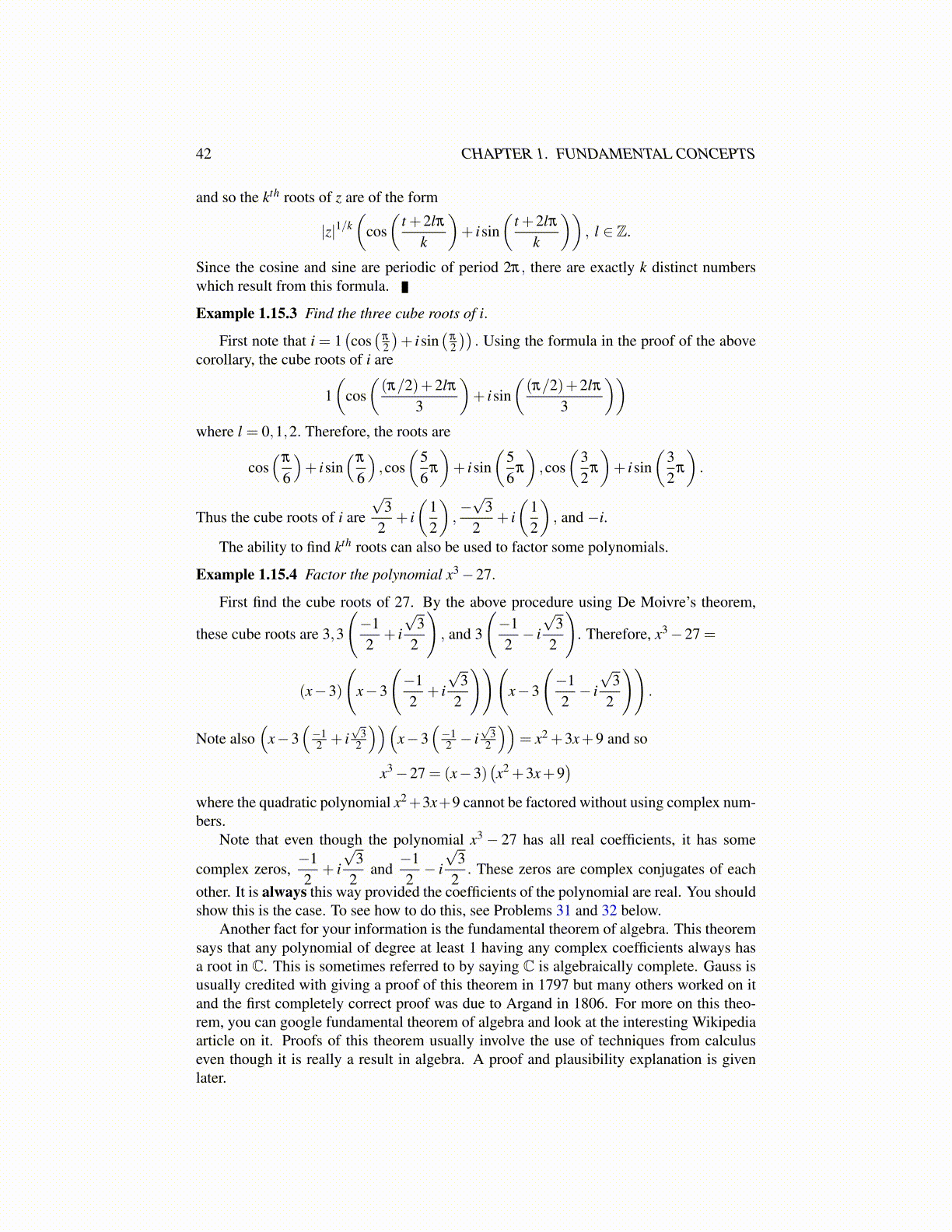
42 CHAPTER 1. FUNDAMENTAL CONCEPTS
and so the kth roots of z are of the form
|z|1/k(
cos(
t +2lπk
)+ isin
(t +2lπ
k
)), l ∈ Z.
Since the cosine and sine are periodic of period 2π, there are exactly k distinct numberswhich result from this formula.
Example 1.15.3 Find the three cube roots of i.
First note that i = 1(cos(
π
2
)+ isin
(π
2
)). Using the formula in the proof of the above
corollary, the cube roots of i are
1(
cos((π/2)+2lπ
3
)+ isin
((π/2)+2lπ
3
))where l = 0,1,2. Therefore, the roots are
cos(
π
6
)+ isin
(π
6
),cos
(56
π
)+ isin
(56
π
),cos
(32
π
)+ isin
(32
π
).
Thus the cube roots of i are
√3
2+ i(
12
),−√
32
+ i(
12
), and −i.
The ability to find kth roots can also be used to factor some polynomials.
Example 1.15.4 Factor the polynomial x3 −27.
First find the cube roots of 27. By the above procedure using De Moivre’s theorem,
these cube roots are 3,3
(−12
+ i
√3
2
), and 3
(−12
− i
√3
2
). Therefore, x3 −27 =
(x−3)
(x−3
(−12
+ i
√3
2
))(x−3
(−12
− i
√3
2
)).
Note also(
x−3(−12 + i
√3
2
))(x−3
(−12 − i
√3
2
))= x2 +3x+9 and so
x3 −27 = (x−3)(x2 +3x+9
)where the quadratic polynomial x2+3x+9 cannot be factored without using complex num-bers.
Note that even though the polynomial x3 − 27 has all real coefficients, it has some
complex zeros,−12
+ i
√3
2and
−12
− i
√3
2. These zeros are complex conjugates of each
other. It is always this way provided the coefficients of the polynomial are real. You shouldshow this is the case. To see how to do this, see Problems 31 and 32 below.
Another fact for your information is the fundamental theorem of algebra. This theoremsays that any polynomial of degree at least 1 having any complex coefficients always hasa root in C. This is sometimes referred to by saying C is algebraically complete. Gauss isusually credited with giving a proof of this theorem in 1797 but many others worked on itand the first completely correct proof was due to Argand in 1806. For more on this theo-rem, you can google fundamental theorem of algebra and look at the interesting Wikipediaarticle on it. Proofs of this theorem usually involve the use of techniques from calculuseven though it is really a result in algebra. A proof and plausibility explanation is givenlater.